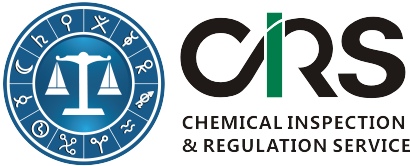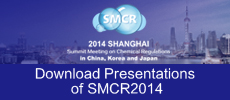Chinese Regulation Requirements on Imported Food Contact Materials and Articles
original article from CIRS
With the significant growth of purchasing power in Chinese market, an increasing number of imported kitchen utensils and other food contact products have been put into Chinese market. However, a majority of manufacturers and companies with limited knowledge about Chinese relevant regulations and standards caused that a large number of unqualified products entering into China. According to the document The Quality of Imported Food Contact Materials and Products in 2014 released by General Administration of Quality Supervision, Inspection and Quarantine (AQSIQ), the disqualification rate of Chinese imported food contact products in 2014 reached to 6%, which is the worst situation in recent three years.
On the one hand, for Chinese customers, imported food contact products without Chinese labels or with non-standard Chinese labels will lead to incorrect usage which is the key reason for most accidents. More to the point, prolonged exposure to some hazardous substances migrated from unqualified food contact materials may cause chronic risk to customer human health. On the other hand, for exporters and importers, technical modification for complying Chinese label is required by CIQ, which will generate additional cost. More seriously, products will be directly rejected or destructed because failed to qualify safety and hygienic standards. In order to avoid unnecessary trade losses, CIRS strongly advise enterprises to conduct the self-test to guarantee the food contact materials and products complying with the requirements of relevant National standards and regulations and design the compliant Chinese label as well. The compliance guidance for imported food contact materials and products compiled by CIRS food team is as follow:
Step 1:According to the materials, ingredients, features and production processing to confirm the product category, then further determine the product national standard which the food contact material or product should comply with.
Table 1 Thecorresponding product National standard for common imported food contact materials and products
Product Category |
The CorrespondingProduct National Standard |
Plastic products |
GB 9687-1988 Hygienic standard for polyethylene product used as food container and tablewares |
Rubber products |
GB 4806.2-1994 Hygienic standard for rubber nipple |
Paper products |
GB 11680-1989 Hygienic standard of paper used for food packaging |
Metal products |
GB9684-2011National food safety standard- stainless steel product |
Ceramic products |
GB 13121-1991 Hygienic standard of ceramics for food container |
Enamelproducts |
GB 4804-84 Hygienic standard for enamel as food container |
Other products |
GB 4805-1994 Hygienic standard for epoxy phenolic resin coating for the internal lacquer of food cans |
Step 2: Check out if the food contact additives with certain dosage are allowed to be used in the food contact products or not, according to GB 9685-2008 and Notices published by National Health and Family Planning Commission (NHFPC). After the ingredients analysis, based on the laboratory testing, confirm the quality of the products are compliant with product National standard.
Table 2Highlights on the quality of imported food contact materials and products confirmation
Product Category |
Food Contact Additive Review |
Safety and Hygienic Items Testing |
Notes |
Plastic products |
▲ |
▲ |
The ingredient shall be in the list of 107 Resins that can be used in food contact materialsor two newly approved resins. |
Rubber products |
▲ |
▲ |
Only natural rubber and silicone rubber are allowed to be used as raw materials of rubber nipple. |
Paper products |
▲ |
▲ |
I. Recycle raw materials are forbidden to be used in paper container set. |
Coating |
▲ |
▲ |
|
Ink |
▲ |
△ |
|
Adhesive |
▲ |
△ |
|
Metal products |
▲ |
▲ |
|
Ceramic products |
▲ |
▲ |
|
Enamel products |
▲ |
▲ |
|
Glass products |
▲ |
▲ |
|
Other products |
Case by case |
||
PS. 1. “▲” means the mandatory National standard stipulate the products. “△”means that for the moment there are no National standard stipulating the products. |
|||
Step 3: Apart from above imported food contact product safety and quality issues, enterprises shall take the Chinese label into account seriously. In accordance with Stipulation on Inspection and Supervision of Imported Food Contact Products and relevant product National standard, the content (exclude the trademark) in the label and specification shall be standard Chinese. Meanwhile, below information should be also indicated accordingly:
II. Product material
III. Original country or region
IV. Oversea manufacturer name
V. Name, address and contact of importer or agent
VI. If the product has the shelf lift, the best before date is necessary.
VII. If necessary, the applicable condition, warning mark and Chinese wary specification shall be indicated.
VIII. Other mandatory contents based on specific product national standard.
With the promulgation of new Food Safety Law in China, the concerns of legislation and supervision for food related products have reached a new height. In the last few years, NHFPC has been working on the revising of food relevant National standards. There have been 13 food contact materials and products related National standard drafts (including 2 basic National standards, 2 product National standards and 9 testing National standards) releasedby far. In addition, 11 new National standards are expected to be published in 2015. Food contact materials and products manufacturers, exporters and importers shall pay more attention to the updated Chinese regulations. In the meantime, CIRS will continually report the amendment and work on the analysis of the new regulations.
Contact Us
- CIRS China
Hangzhou CIRS Co. Ltd (CIRS China)
11F Building 1, Dongguan Hi-Tech Park, 288 Qiuyi Road, Binjiang District, Hangzhou 310052, China
Tel: +86-571 8720 6574 | Fax: +86-571 8720 6533
Email: service@cirs-reach.com

